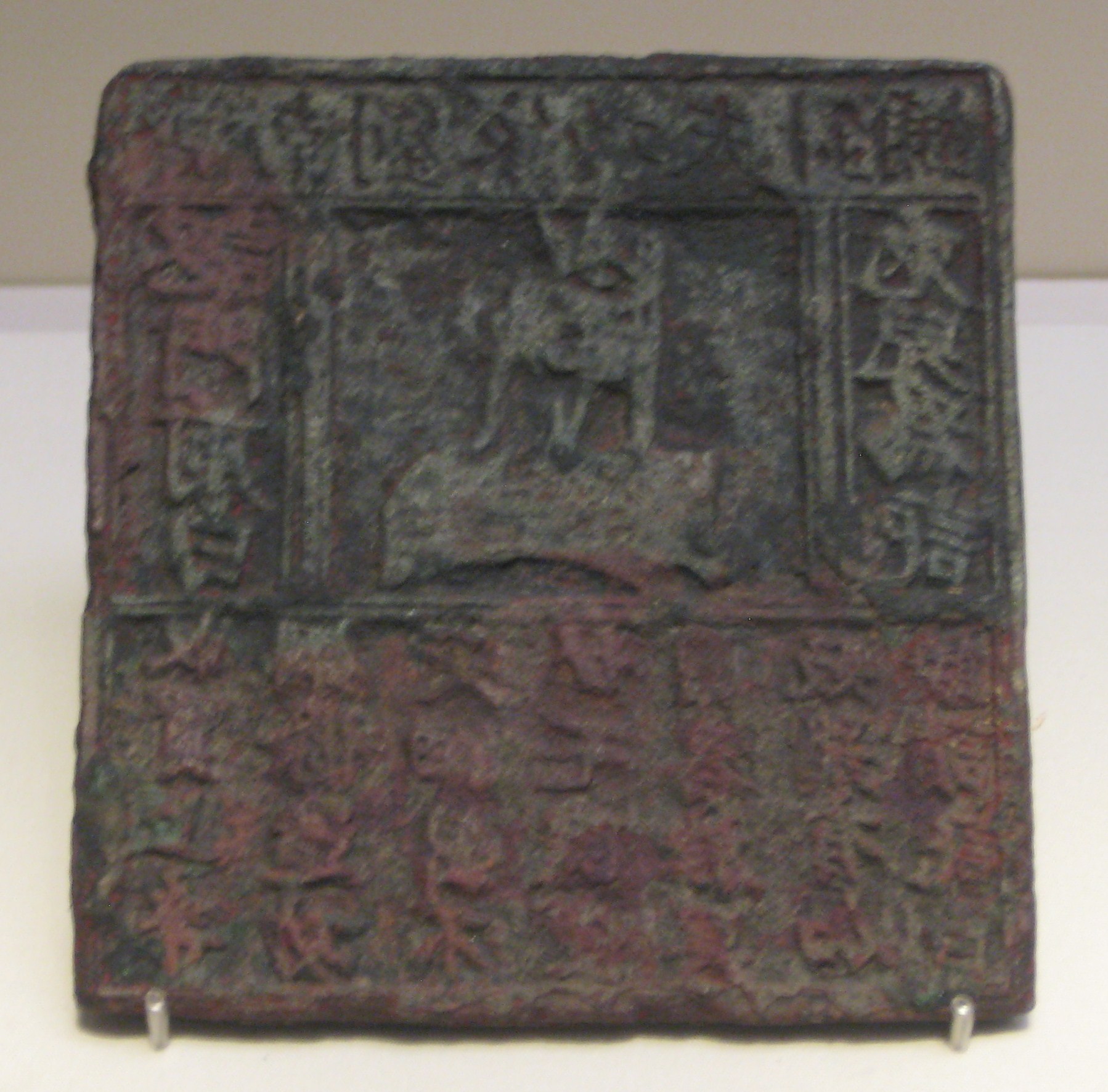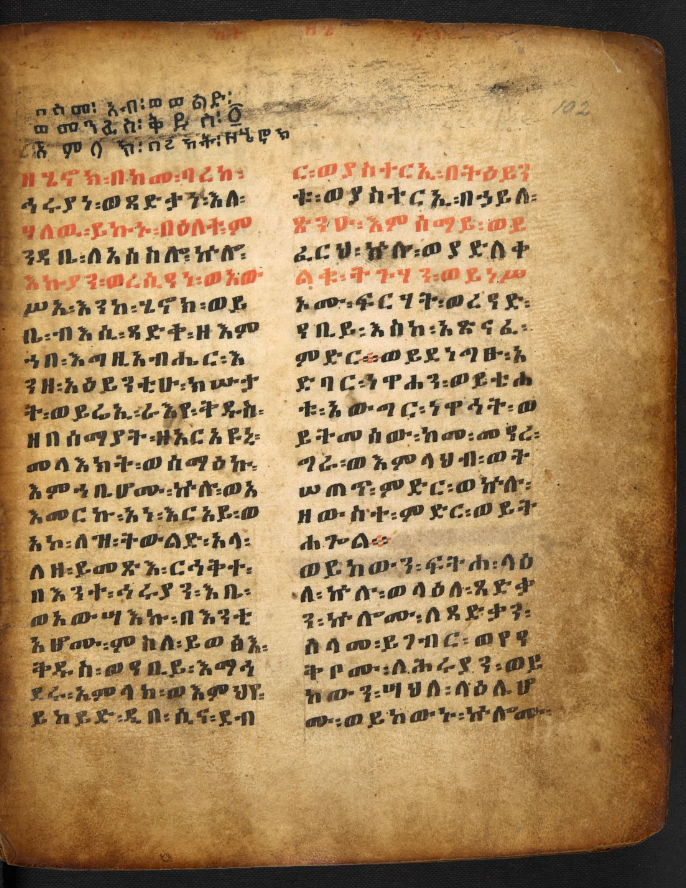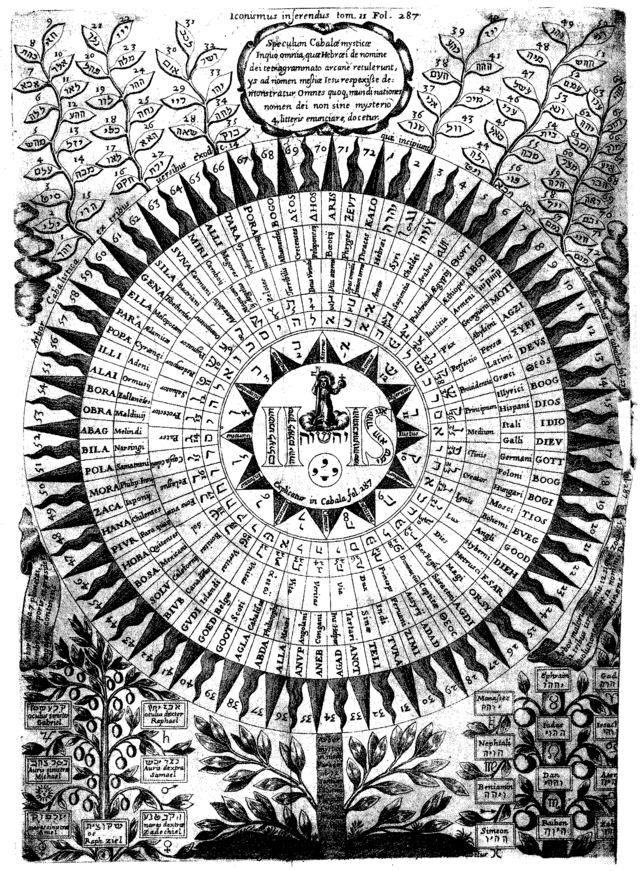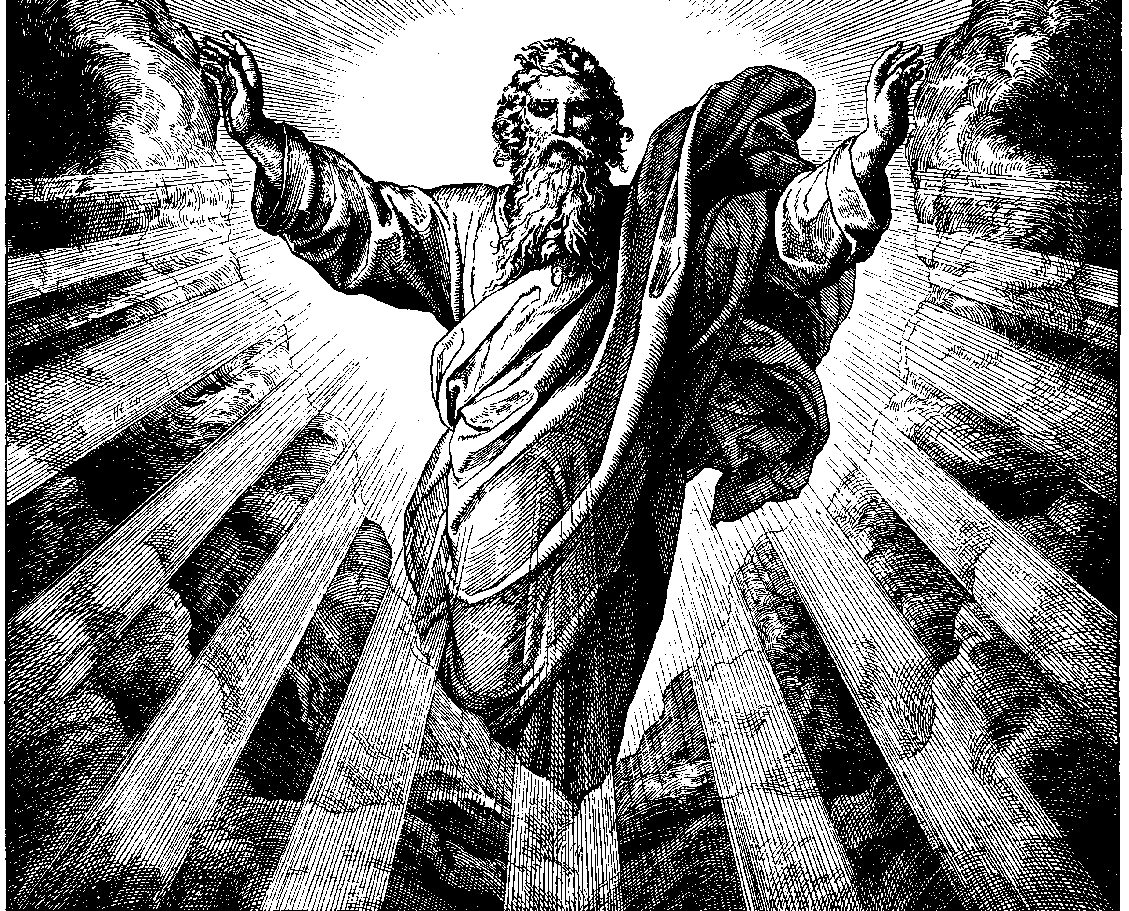|
Contra Varimadum
''Against Varimadus the Arian'' (''Contra Varimadum arianum'') is an anonymous Nicene theological handbook against the Homoian heresy, written in Latin in a polemical style between 439 and 484.Caroline Humfress, ''Orthodoxy and the Courts in Late Antiquity'' (Oxford University Press, 2007), pp. 231–232. It is in the literary form of ''testimonia'' (testimonies), which the reader is supposed to be able to use to respond to Homoian adversaries.Judith McClure, "Handbooks against Heresy in the West, from the Late Fourth to the Late Sixth Centuries," ''Journal of Theological Studies'' 30 (1979): 186–197, at 194–195. It belongs to the genre of heresiology, which was used to define orthodoxy and heresy.Robin Whelan, ''Being Christian in Vandal Africa'' (University of California Press, 2017), pp. 55–60. According to its preface, its author was a native of Roman Africa living in exile in Naples after the Vandal takeover of his province.This is according to Whelan. Humfress hedges by ... [...More Info...] [...Related Items...] OR: [Wikipedia] [Google] [Baidu] |
Nicene
The Nicene Creed, also called the Creed of Constantinople, is the defining statement of belief of Nicene Christianity and in those Christian denominations that adhere to it. The original Nicene Creed was first adopted at the First Council of Nicaea in 325. According to the traditional view, forwarded by the Council of Chalcedon of 451, the Creed was amended in 381 by the First Council of Constantinople as "consonant to the holy and great Synod of Nice." However, many scholars comment on these ancient Councils saying "there is a failure of evidence" for this position since no one between the years of 381–451 thought of it in this light. Further, a creed "almost identical in form" was used as early as 374 by St. Epiphanius of Salamis. Nonetheless, the amended form is presently referred to as the Nicene Creed or the Niceno-Constantinopolitan Creed. J.N.D. Kelly, who stands among historians as an authority on creedal statements, disagrees with the aforementioned assessment. He ... [...More Info...] [...Related Items...] OR: [Wikipedia] [Google] [Baidu] |
Trinity
The Trinity (, from 'threefold') is the Christian doctrine concerning the nature of God, which defines one God existing in three, , consubstantial divine persons: God the Father, God the Son (Jesus Christ) and God the Holy Spirit, three distinct persons ('' hypostases'') sharing one essence/substance/nature ('' homoousion''). As the Fourth Lateran Council declared, it is the Father who s, the Son who is , and the Holy Spirit who proceeds. In this context, one essence/nature defines God is, while the three persons define God is. This expresses at once their distinction and their indissoluble unity. Thus, the entire process of creation and grace is viewed as a single shared action of the three divine persons, in which each person manifests the attributes unique to them in the Trinity, thereby proving that everything comes "from the Father", "through the Son", and "in the Holy Spirit". This doctrine is called Trinitarianism, and its adherents are called Trinitarians, ... [...More Info...] [...Related Items...] OR: [Wikipedia] [Google] [Baidu] |
Ad Novatianum
Advertising is the practice and techniques employed to bring attention to a product or service. Advertising aims to present a product or service in terms of utility, advantages, and qualities of interest to consumers. It is typically used to promote a specific good or service, but there are a wide range of uses, the most common being commercial advertisement. Commercial advertisements often seek to generate increased consumption of their products or services through "branding", which associates a product name or image with certain qualities in the minds of consumers. On the other hand, ads that intend to elicit an immediate sale are known as direct-response advertising. Non-commercial entities that advertise more than consumer products or services include political parties, interest groups, religious organizations, and governmental agencies. Non-profit organizations may use free modes of persuasion, such as a public service announcement. Advertising may also help to reas ... [...More Info...] [...Related Items...] OR: [Wikipedia] [Google] [Baidu] |
Book Of Enoch
The Book of Enoch (also 1 Enoch; Hebrew language, Hebrew: סֵפֶר חֲנוֹךְ, ''Sēfer Ḥănōḵ''; , ) is an Second Temple Judaism, ancient Jewish Apocalyptic literature, apocalyptic religious text, ascribed by tradition to the Patriarchs (Bible), patriarch Enoch who was the father of Methuselah and the great-grandfather of Noah..Barker, Margaret. (2005) [1998]. ''The Lost Prophet: The Book of Enoch and Its Influence on Christianity''. London: SPCK; Sheffield Phoenix Press. The Book of Enoch contains unique material on the origins of demons and Nephilim, why some fallen angel, angels fell from heaven, an explanation of why the Genesis flood narrative, Genesis flood was morally necessary, and a prophetic exposition of the Millennialism, thousand-year reign of the Messiah. Three books are traditionally attributed to Enoch, including the distinct works 2 Enoch and 3 Enoch. 1 Enoch is not considered to be Biblical canon, canonical scripture by most Jewish or Christian chu ... [...More Info...] [...Related Items...] OR: [Wikipedia] [Google] [Baidu] |
Vigilius Of Thapsus
Vigilius of Thapsus (before 484) also known as Vigilius Tapsensis, Vigilius Afer, or Vergil of Tapso, was a 5th-century Bishop of Thapsus in the province Byzacena, Byzacium, in what is now Tunisia, and as well as a theological writer and polemicist. After the Councils of Carthage#Synod of 484, Synod of 484, he was probably banished by the Vandal Kingdom, Vandal king Huneric, who supported Arianism, for his Trinity, Trinitarian beliefs, along with other Catholics. He may have fled to Constantinople. Works He wrote one treatise, ''Adversus Nestorium et Eutychem Libri quinque pro defesione Synodi Chalcedonensis'', often shortened to simply ''Contra Eutychetem'', in five volumes, according to the Dictionary of Christian Biography and Literature to the End of the Sixth Century, Dictionary of Christian Biography and Literature. It provides a summary of the arguments against Eutychianism and defends Chalcedonian Christianity. The Catholic Encyclopedia attributes another work to him, a ... [...More Info...] [...Related Items...] OR: [Wikipedia] [Google] [Baidu] |
New Testament
The New Testament (NT) is the second division of the Christian biblical canon. It discusses the teachings and person of Jesus in Christianity, Jesus, as well as events relating to Christianity in the 1st century, first-century Christianity. The New Testament's background, the first division of the Christian Bible, is called the Old Testament, which is based primarily upon the Hebrew Bible; together they are regarded as Sacred Scripture by Christians. The New Testament is a collection of 27 Christianity, Christian texts written in Koine Greek by various authors, forming the second major division of the Christian Bible. It includes four Gospel, gospels, the Acts of the Apostles, epistles attributed to Paul the Apostle, Paul and other authors, and the Book of Revelation. The Development of the New Testament canon, New Testament canon developed gradually over the first few centuries of Christianity through a complex process of debate, rejection of Heresy, heretical texts, and ... [...More Info...] [...Related Items...] OR: [Wikipedia] [Google] [Baidu] |
Old Testament
The Old Testament (OT) is the first division of the Christian biblical canon, which is based primarily upon the 24 books of the Hebrew Bible, or Tanakh, a collection of ancient religious Hebrew and occasionally Aramaic writings by the Israelites. The second division of Christian Bibles is the New Testament, written in Koine Greek. The Old Testament consists of many distinct books by various authors produced over a period of centuries. Christians traditionally divide the Old Testament into four sections: the first five books or Pentateuch (which corresponds to the Jewish Torah); the history books telling the history of the Israelites, from their conquest of Canaan to their defeat and exile in Babylon; the poetic and wisdom literature, which explore themes of human experience, morality, and divine justice; and the books of the biblical prophets, warning of the consequences of turning away from God. The Old Testament canon differs among Christian denominations. The Ea ... [...More Info...] [...Related Items...] OR: [Wikipedia] [Google] [Baidu] |
Names Of God
There are various names of God, many of which enumerate the various Quality (philosophy), qualities of a Supreme Being. The English word ''God (word), god'' (and its equivalent in other languages) is used by multiple religions as a noun to refer to different deities, or specifically to the Supreme Being, as denoted in English by the capitalized and uncapitalized terms ''God'' and ''deity, god''. Ancient cognate equivalents for the biblical Hebrew ''Elohim'', one of the most common Names of God in Judaism, names of God in the Bible, include Proto-Semitic language, proto-Semitic ''El (deity), El'', biblical Aramaic ''Names of God in Judaism#Elah, Elah'', and Arabic ''ilah''. The personal or proper name for God in many of these languages may either be distinguished from such property (philosophy), attributes, or homonymic. For example, in Judaism the tetragrammaton is sometimes related to the ancient Hebrew ''Names of God in Judaism#Ehyeh, ehyeh'' ("I Am that I Am, I will be"). It ... [...More Info...] [...Related Items...] OR: [Wikipedia] [Google] [Baidu] |
Holy Spirit In Christianity
Most Christian denominations believe the Holy Spirit, or Holy Ghost, to be the third divine Person of the Trinity, a triune god manifested as God the Father, God the Son, and God the Holy Spirit, each being God. Nontrinitarian Christians, who reject the doctrine of the Trinity, differ significantly from mainstream Christianity in their beliefs about the Holy Spirit. In Christian theology, pneumatology is the study of the Holy Spirit. Due to Christianity's historical relationship with Judaism, theologians often identify the Holy Spirit with the concept of the ''Ruach Hakodesh'' in Jewish scripture, on the theory that Jesus was expanding upon these Jewish concepts. Similar names, and ideas, include the ''Ruach Elohim'' (Spirit of God), ''Ruach YHWH'' (Spirit of Yahweh), and the ''Ruach Hakodesh'' (Holy Spirit). In the New Testament the Holy Spirit is identified with the Spirit of Christ, the Spirit of Truth, and the Paraclete (helper). The New Testament details a close relat ... [...More Info...] [...Related Items...] OR: [Wikipedia] [Google] [Baidu] |
God The Father
God the Father is a title given to God in Christianity. In mainstream trinitarian Christianity, God the Father is regarded as the first Person of the Trinity, followed by the second person, Jesus Christ the Son, and the third person, God the Holy Spirit. Since the second century, Christian creeds included affirmation of belief in "God the Father ( Almighty)", primarily in his capacity as "Father and creator of the universe". Christians take the concept of God as the father of Jesus Christ metaphysically further than the concept of God as the creator and father of all people, as indicated in the Apostles' Creed where the expression of belief in the "Father almighty, creator of heaven and earth" is immediately, but separately followed by in "Jesus Christ, his only Son, our Lord", thus expressing both senses of fatherhood. Christianity Overview In much of modern Christianity, God is addressed as the Father, in part because of his active interest in human affairs on the ... [...More Info...] [...Related Items...] OR: [Wikipedia] [Google] [Baidu] |
God The Son
God the Son (, ; ) is the second Person of the Trinity in Christian theology. According to Christian doctrine, God the Son, in the form of Jesus Christ, is the incarnation of the eternal, pre-existent divine ''Logos'' (Koine Greek for "word") through whom all things were created. Although the precise term "God the Son" does not appear in the Bible, it serves as a theological designation expressing the understanding of Jesus as a part of the Trinity, distinct yet united in essence with God the Father and God the Holy Spirit (the first and third Persons of the Trinity respectively). Sources The phrase "God the Son" does not appear in the Bible but is found in later Christian writings. It mistakenly appears in a medieval manuscript, MS No.1985, where Galatians 2:20 has "Son of God" changed to "God the Son". In English, this term comes from Latin usage, as seen in the Athanasian Creed and other early church texts. In Greek, "God the Son" is written as ''ho Theos ho huios'' (ὁ ... [...More Info...] [...Related Items...] OR: [Wikipedia] [Google] [Baidu] |
Lost Literary Work
A lost literary work (referred throughout this article just as a lost work) is a document, literary work, or piece of multimedia, produced of which no surviving copies are known to exist, meaning it can be known only through reference, or literary fragments. This term most commonly applies to works from the classical world, although it is increasingly used in relation to modern works. A work may be lost to history through the destruction of an original manuscript and all later copies. Works—or, commonly, small fragments of works—have survived by being found by archaeologists during investigations, or accidentally by laypersons such as, for example, the finding Nag Hammadi library scrolls. Works also survived when they were reused as bookbinding materials, quoted or included in other works, or as palimpsests, where an original document is imperfectly erased so the substrate on which it was written can be reused. The discovery, in 1822, of Cicero's '' De re publica'' was ... [...More Info...] [...Related Items...] OR: [Wikipedia] [Google] [Baidu] |







